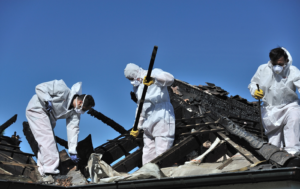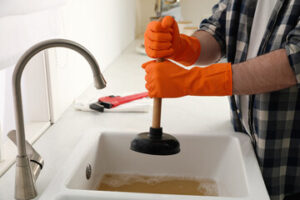The roof is your first line of defense against moisture and other outside elements. It’s essential to catch any issues that may arise before they become major problems.

This is why a roofing maintenance checklist covers everything from field drains to roof penetration seals. Inspectors will also check for sagging pipes, deflected hangers, and supports digging into the roof membrane. Visit https://www.fresnoroofingexperts.com/ to learn more.
Your roof is the barrier between your home and the elements. It protects your family from obvious hazards like weather events and falling tree branches, but it also provides less-obvious protections like insulating the interior of your home to prevent energy waste. Regular roofing maintenance will keep your family safe and comfortable. In order to properly assess the condition of your roof, you need a detailed checklist that will guide you through every step of the inspection process. A professional inspector will use a checklist that is customized for each type of roof and its maintenance needs.
To begin with, a roofer will examine the ceilings and walls closest to the roof to look for stains or discoloration. These signs may indicate a leaky roof or other structural damage. They will also check for proper venting to ensure that your house doesn’t overheat.
Next, the roofer will check for the overall condition of the shingles. They will look for loose, missing, or curled shingles as well as any dark areas on the roof that could be caused by a leak. They will also inspect the flashing to make sure that it is secure and free of separation, rot, or corrosion. They will also examine the gutters to make sure that they are free of clogs and that they are functioning properly to direct water away from the building.
After the roofer checks all of the accessible parts of your home, they will get on the roof and visually inspect its condition. They will take photos of any leaks, rot, or other problems that they may find and note their findings on the report. They will also look at the soffit area, which is where debris can collect. This can include discarded soft drink cans, which can clog the gutters and downspouts. The inspector will also examine the rubber boots and seals around pipe penetrations to make sure that they are free of cracking, leaking, or deterioration.
Depending on the size of your roof and its material, an inspection may cost anywhere from $250 to $650. It is important to hire a company with a good reputation and excellent customer reviews. They should be bonded, insured, and licensed. Also, inquire about a warranty on the work performed.
Clean the Gutters
Gutters play a vital role in the proper functioning of your roof. They drain rainwater that slides off the shingles into downspouts that control the direction of the water. They prevent water from flowing off the shingles in an unrestrained manner that could supersaturate soil and jeopardize nearby greenery. Instead, the downspouts divert the water to areas where it can fulfill its natural function of protecting the foundation and walls of your home from flooding, rot, deterioration and mold.
A properly functioning gutter system also protects the roof itself by directing water and debris away from the fascia, soffit and shingle area. Without gutters, the water would collect on the roof, causing rot and deterioration that damages the shingles, wood fascia, and window sills. During the winter, clogged gutters can cause ice dams to form, which melt and seep through the shingles and roofing materials, damaging the roof and home structure.
Cleaning the gutters is a relatively easy job that can be done with a ladder and a garden hose. Start by placing the ladder on the ground at a location where it can be reached from one end of the gutter without climbing the roof. Make sure it is locked and stable, and use a ladder stabilizer like the Louisville Ladder LP-2200-00 Stabilizer ($44, Amazon) to keep it in place. If you don’t feel confident enough to climb the ladder, ask a friend or family member to stand by and help you out.
Start at one end of the gutter and spray a steady stream of water at the accumulated gunk. This will dislodge and wash the leaves, twigs and debris from the gutter, washing it down into the downspout and away from the house. Move to the next section of the gutter and repeat until all sections are clean. After finishing, look for any wash-off on the ground or in downspouts and wash it up to avoid staining or slipping hazards and maintain a neat appearance on your property.
Once you have cleaned a section of the gutter, test it by directing the nozzle down into the downspouts to ensure that they are free from blockages and that the water is draining effectively. If you don’t feel comfortable working on a ladder or doing a thorough job from the ground, consider hiring a professional.
Trim Tree Branches
While trimming tree branches is a common maintenance task, it’s not something you want to take lightly. Not only are high and large branches a safety risk to people and structures, but improper pruning can weaken a tree and lead to damage or even death. In addition, pruning can leave stubs that create an entry point for insects and moisture, which promotes decay and can further weaken the structure of the branch and tree.
Before you start trimming, make sure your tools are clean and properly sharpened. Using dirty or dull tools can create jagged cuts that are more difficult to heal. In addition, if the tree is very tall or near power lines, it may be best to hire a professional rather than attempt to prune the branches yourself.
One of the most common mistakes that people make when attempting to prune their own trees is cutting too much at once. This practice, known as “topping,” can be very stressful for a tree and often leads to infected wounds that are more susceptible to insect and fungi invasion. In addition, removing too much foliage at once can also cause the tree to experience root rot.
When removing a large or thick branch, use an undercut and an overcut to prevent tearing. First, saw through the underside of the branch about two inches out from where you will make your final cut. This prevents the branch from falling and causing a bark tear if it is still attached to the trunk when you remove it. Next, saw through the topside of the branch a few inches farther out. This will remove the bulk of the branch and leave a stub that can be removed later. It is important to make these cuts at a slight angle to the lateral limb, or branch collar, to avoid causing a girdling wound.
When a stub is left behind, it should be sawed off as soon as possible. Leaving a stub prevents the swollen area, called a callus, from closing over the wound and can allow insects to make inroads into the branch or trunk.
Inspect the Roof
The roof inspection is where a home inspector really shines. From the ground, a home inspector can see many of the elements that contribute to a roof’s longevity and integrity. They will examine the shingles for signs of deterioration, including curling or buckling, discoloration and fungus. They will also look at the flashing and fasteners to ensure they are free of rust or other damage.
Similarly, they will inspect the gutters to ensure they are clean and have no physical damage. They will also check for clogs and to ensure that downspouts are effectively draining water from the home. They will also look at the roof to ensure that it has adequate ventilation and insulation.
Chimneys and skylights are common sources of leaks, so they will be examined closely to ensure that the structural components remain in good condition. Inspectors will also look at the flashing around the chimneys and skylights to ensure it is in good shape. They will also inspect the field of the roof, looking for surface wear and general degradation that could lead to leaks.
A home inspector will also examine the fascia and soffit boards, which are located along the edge of a roof’s overhang. They will look for rot, cracking, warping and other types of damage that can lead to leaking or pest infestation. They will also look at the roof vents to ensure that they are still properly installed and working correctly.
While high-quality roofing materials are important, a roof won’t work as it should if it isn’t installed properly. Inspectors will therefore look for workmanship problems that may exist in the initial installation or in subsequent repairs.
Inspecting a roof for potential damage is not an easy task. It requires the right equipment, including a ladder that is securely mounted to the house and with appropriate safety precautions taken. It’s also important to take the time to do a thorough job. The results of a ground-level inspection can provide valuable insight into a roof’s condition and help prevent the need for costly repairs in the future.








